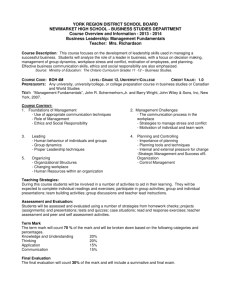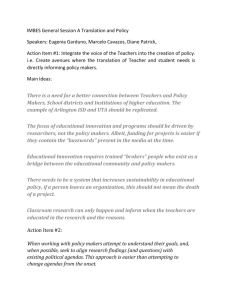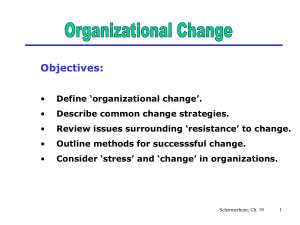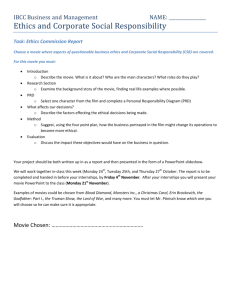Management: Decision Making
advertisement
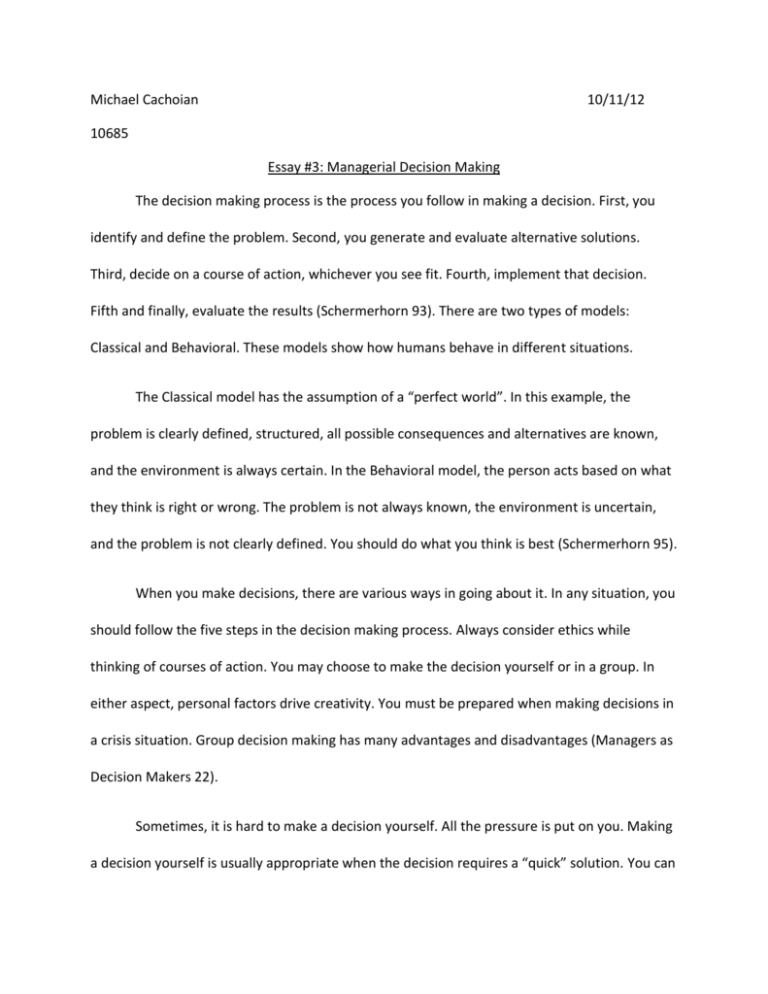
Michael Cachoian 10/11/12 10685 Essay #3: Managerial Decision Making The decision making process is the process you follow in making a decision. First, you identify and define the problem. Second, you generate and evaluate alternative solutions. Third, decide on a course of action, whichever you see fit. Fourth, implement that decision. Fifth and finally, evaluate the results (Schermerhorn 93). There are two types of models: Classical and Behavioral. These models show how humans behave in different situations. The Classical model has the assumption of a “perfect world”. In this example, the problem is clearly defined, structured, all possible consequences and alternatives are known, and the environment is always certain. In the Behavioral model, the person acts based on what they think is right or wrong. The problem is not always known, the environment is uncertain, and the problem is not clearly defined. You should do what you think is best (Schermerhorn 95). When you make decisions, there are various ways in going about it. In any situation, you should follow the five steps in the decision making process. Always consider ethics while thinking of courses of action. You may choose to make the decision yourself or in a group. In either aspect, personal factors drive creativity. You must be prepared when making decisions in a crisis situation. Group decision making has many advantages and disadvantages (Managers as Decision Makers 22). Sometimes, it is hard to make a decision yourself. All the pressure is put on you. Making a decision yourself is usually appropriate when the decision requires a “quick” solution. You can focus on the problem without worrying about social pressures that come with group work. A disadvantage of working by yourself is that you only have one opinion. Other people’s opinions are not there. A sole decision is least appropriate when the problem is complicated and requires long-term thought and is considered with a company’s long-term goals. On the other hand, working in groups can be a great option if you need feedback. Some advantages to group work are more alternatives, better understanding, and greater commitment. Some disadvantages to group work are giving in to social pressures, unexpected crisis situations that can turn deadly if not quickly resolved, more time is required, and minority members could dominate. These should be considered before doing group work (Managers as Decision Makers 25). When I am making a decision, I always think about the consequences. For example, over the summer, I spent a day out for my 20th birthday. The plan was to go to the movies and then go to dinner afterwards. The movie started at 4:15, so it was slated to end at around 6:30, which is the perfect time for dinner. After finding out I needed to pick up all my friends, it shifted the time. I then had to leave at 2:30 in order to make the five necessary stops. After the pickups, it was then I had to decide the fastest way to get to the theater. If I went the most direct way, I potentially could’ve hit traffic going towards Queens. So, I decided to go a slightly longer way to avoid heavy traffic. It took an extra 10 minutes, but we managed to get to the movie on time. In terms of ethics, the shift in the route needed to be okay with my friends in the car. I also needed to take care driving in not making sharp turns or running red lights. Schermerhorn, John R. Exploring Management. Hoboken, NJ: Wiley, 2010. 93-95. Print. Susan. Managers as Decision Makers. 20 June 2011. PowerPoint.
